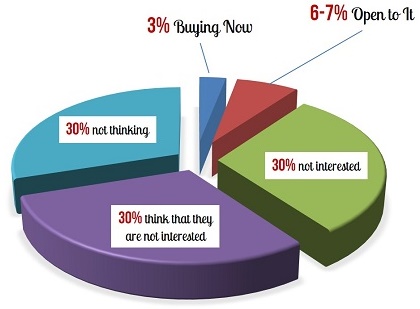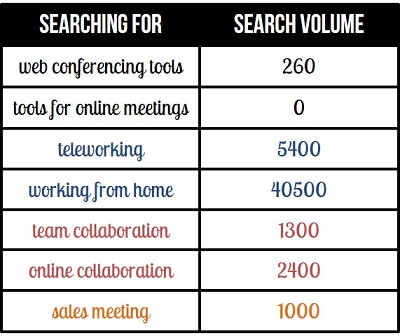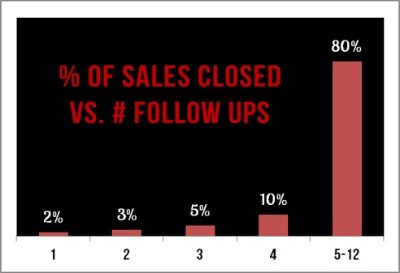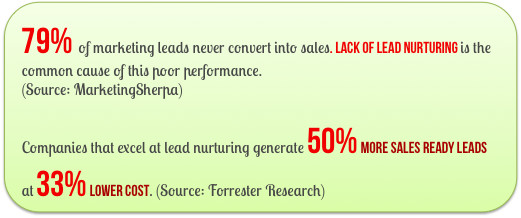84% of your potential B2B prospects start their research online. If you are not online, you are simply not found.
Yet, things work differently if you are selling to other companies. B2B has specific challenges.
Here are the most common mistakes companies make when they venture in B2B online marketing.
Mistake #1: Failing to Attract The Right Prospects
The sad truth is, most of your prospects are not yet ready to buy. According to Chet Holmes, a best selling author and sales expert, only 3% of all prospects are in a buying process right now, and only 6-7% are open to it.

Here’s an example.
GoToMeeting by Citrix allows companies to host online meetings. Some prospects may actually be searching for “tools for online meetings”. But what about managers thinking about cutting down travel expenses? Or researching how to allow their employees to work from home? Or sales reps looking for the best way to prepare a remote sales meeting? They are all potential customers of GoToMeeting – but are not in the buying process yet.

Search estimates provided by Google Keyword Planner tool (# monthly searches)
Takeaway: develop strategies that will attract prospects even when they are not ready to buy.
Mistake #2: The Informational Website
Most companies spread information about themselves and their services via their website, newsletters and social networks. This is certainly necessary, but suffers two major problems:
- This information is only relevant to prospects that are ready to buy, aware of the type of service you offer and the terminology you use to describe it.
- We live in an over-communicated society. People are used to quickly filter out commercial messages.
Online, you have less than 8 seconds to capture attention of your prospects
Takeaway: if you want to capture leads (and not have them “bounce off” your website) you need to craft a series of targeted landing pages designed for conversion.
Mistake #3: Pitching Too Early
When you meet someone for the first time – what do you do? Do you pitch them your product or a service right away?
People hate being sold to.
Especially if they do not know you and not trust you yet. People buy from people, people they trust. Pushing for business to early raises defenses and arouses mistrust.
Online is no different. If anything, people are even more distrusting online.
Takeaway: you will need to build a trusting relationship with your prospects before you get their permission to pitch. You will first need to:
- Show deep understanding of their job and their challenges
- Demonstrate your expertise
- Show social proof
Mistake #4: Failing to Follow Up
You need to relentlessly follow up, and stay on top of your prospect’s mind. According to The National Sales Executive Association, 80% of successful sales are made only on the fifth to even twelfth contact with the potential buyer.

The same study shows that, on average, sales professionals follow up only three times. Why is that? A major factor is that you simply may not have manpower to follow up with everyone.
Takeaway: You need to carry out a series of meaningful conversations on topics your prospects care about. But what if you don’t have the time? To do this with a large number of prospects, a so-called lead nurturing process needs to be in place.

Mistake #5: Not Building a Growth Engine
Sales is not an art, nor is it mystic dark magic only available to a few selected A-type personalities.
There is a lot of structure in sales.
In fact, it can be engineered. It’s almost as if you are building a sales “machine”. I like to call it a “Growth Engine”, because when done right, many steps can either be automated, or outsourced to third parties.
Takeaway: think of your marketing and sales as an engine, a process that repeatedly brings a steady flow of new customers. Track everything you do (time, money spent, success rate) and build your growth engine one component at the time, using the numbers as a fine-tuning guide.
Conclusion
Online marketing and lead generation can be a waste of time and money if not done well. To be able to build a successful growth engine for a business that sells to other companies, you need to:
- Attract prospects even if they are not yet ready to buy
- Develop a trusting relationship with your prospects, and stay on top of their mind
- Have a system to detect which of your prospects are ready for the next step
